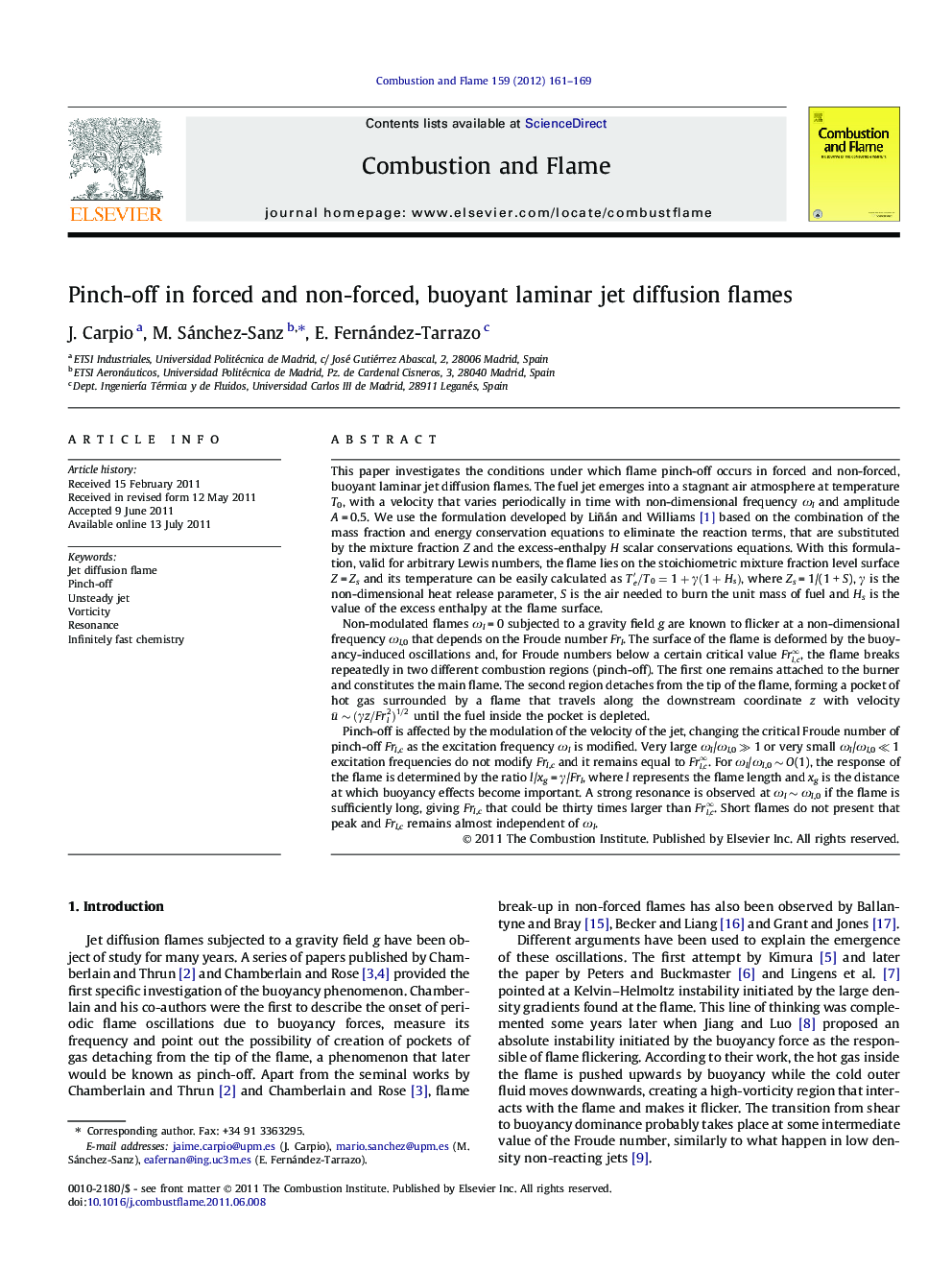| کد مقاله | کد نشریه | سال انتشار | مقاله انگلیسی | نسخه تمام متن |
|---|---|---|---|---|
| 169163 | 457981 | 2012 | 9 صفحه PDF | دانلود رایگان |

This paper investigates the conditions under which flame pinch-off occurs in forced and non-forced, buoyant laminar jet diffusion flames. The fuel jet emerges into a stagnant air atmosphere at temperature T0, with a velocity that varies periodically in time with non-dimensional frequency ωl and amplitude A = 0.5. We use the formulation developed by Liñán and Williams [1] based on the combination of the mass fraction and energy conservation equations to eliminate the reaction terms, that are substituted by the mixture fraction Z and the excess-enthalpy H scalar conservations equations. With this formulation, valid for arbitrary Lewis numbers, the flame lies on the stoichiometric mixture fraction level surface Z = Zs and its temperature can be easily calculated as Te′/T0=1+γ(1+Hs), where Zs = 1/(1 + S), γ is the non-dimensional heat release parameter, S is the air needed to burn the unit mass of fuel and Hs is the value of the excess enthalpy at the flame surface.Non-modulated flames ωl = 0 subjected to a gravity field g are known to flicker at a non-dimensional frequency ωl,0 that depends on the Froude number Frl. The surface of the flame is deformed by the buoyancy-induced oscillations and, for Froude numbers below a certain critical value Frl,c∞, the flame breaks repeatedly in two different combustion regions (pinch-off). The first one remains attached to the burner and constitutes the main flame. The second region detaches from the tip of the flame, forming a pocket of hot gas surrounded by a flame that travels along the downstream coordinate z with velocity u¯∼(γz/Frl2)1/2 until the fuel inside the pocket is depleted.Pinch-off is affected by the modulation of the velocity of the jet, changing the critical Froude number of pinch-off Frl,c as the excitation frequency ωl is modified. Very large ωl/ωl,0 ≫ 1 or very small ωl/ωl,0 ≪ 1 excitation frequencies do not modify Frl,c and it remains equal to Frl,c∞. For ωl/ωl,0 ∼ O(1), the response of the flame is determined by the ratio l/xg = γ/Frl, where l represents the flame length and xg is the distance at which buoyancy effects become important. A strong resonance is observed at ωl ∼ ωl,0 if the flame is sufficiently long, giving Frl,c that could be thirty times larger than Frl,c∞. Short flames do not present that peak and Frl,c remains almost independent of ωl.
Journal: Combustion and Flame - Volume 159, Issue 1, January 2012, Pages 161–169